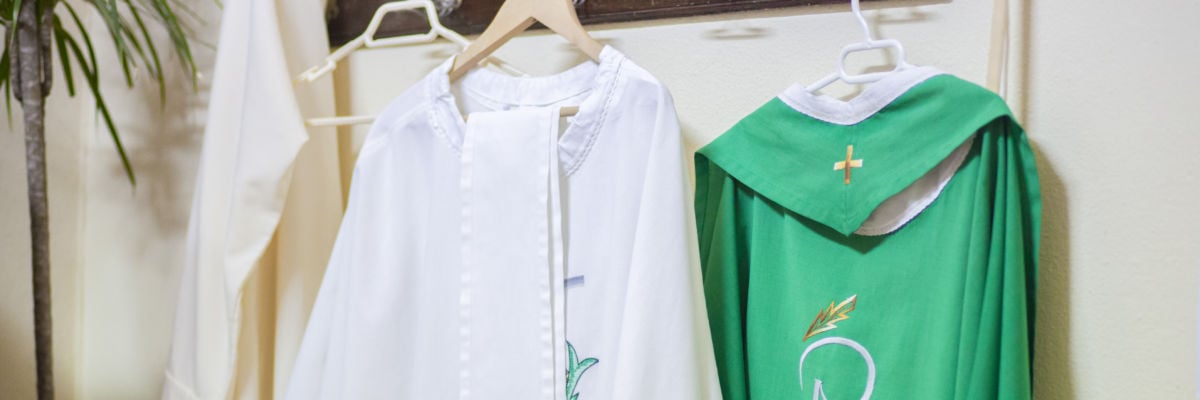
Question:
Answer:
In the General Instruction of the Roman Missal (GIRM), which provides universal guidelines for the celebration of the Mass, the Church provides:
Diversity of color in the sacred vestments has as its purpose to give more effective expression even outwardly whether to the specific character of the mysteries of faith to be celebrated or to a sense of Christian life’s passage through the course of the liturgical year (GIRM 345).
For example, priests and deacons wear purple vestments for the seasons of Advent and Lent, given that they are seasons of penance, preparation and sacrifice. Here are the specific norms of the GIRM regarding liturgical colors, which are mainly in GIRM 346:
As regards the color of sacred vestments, traditional usage should be observed, namely:
a) The color white is used in the Offices and Masses during Easter Time and Christmas Time; on the Solemnity of the Most Holy Trinity; and furthermore on celebrations of the Lord other than of his Passion, celebrations of the Blessed Virgin Mary, of the Holy Angels, and of Saints who were not Martyrs; on the Solemnities of All Saints (November 1) and of the Nativity of St. John the Baptist (June 24 ); and on the Feasts of St. John the Evangelist (December 27), of the Chair of St. Peter (February 22), and of the Conversion of St. Paul (January 25).
b) The color red is used on Palm Sunday of the Lord’s Passion and on Friday of Holy Week (Good Friday), on Pentecost Sunday, on celebrations of the Lord’s Passion, on the “birthday” feast days of Apostles and Evangelists, and on celebrations of Martyr Saints.
c) The color green is used in the Offices and Masses of Ordinary Time.
d) The color violet or purple is used in Advent and Lent. It may also be worn in Offices and Masses for the Dead.
e) Besides the color violet, the colors white or black may be used at funeral services and at other Offices and Masses for the Dead in the Dioceses of the United States of America.
f) The color rose may be used, where it is the practice, on Gaudete Sunday (Third Sunday of Advent) and on Laetare Sunday (Fourth Sunday of Lent).
g) On more solemn days, festive, that is, more precious, sacred vestments may be used even if not of the color of the day.
h) The colors gold or silver may be worn on more solemn occasions in the Dioceses of the United States of America.
“Ritual Masses,” the Church adds,
are celebrated in their proper color, in white, or in a festive color; Masses for Various Needs, on the other hand, are celebrated in the color proper to the day or the time of year or in violet if they have a penitential character, for example, nos. 31, 33, or 38; Votive Masses are celebrated in the color suited to the Mass itself or even in the color proper to the day or the time of the year (GIRM 347).



